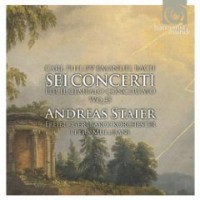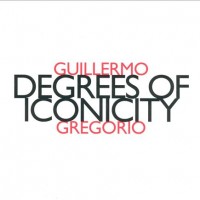IPC’s Acoustic Energizer and Disc Energizer
|
[These remarks appear simultaneously in StereoTimes. The names in the first paragraph are those of Stereo Times reviewers.] Mike Silverton [April 2013.] The Acoustic Energizer, a Follow-up Before we get into it, I urge you to read Stephen Yan’s Acoustic Energizer report, along with Clement Perry’s postscript. Permit me to ruin whatever suspense might obtain by stating at the outset that my comments will support theirs – no cavils, demurrers or contradictions to follow. If I may prognosticate, there’s no way that, among audiophiles, these AE devices will be other than a roaring success. To begin at the skin: the AE’s fit, finish and design suggest good planning and quality control, not always the case for niche-market goodies. The slotted body appears to be made of a sturdy composite, with the topside’s small, nicely machined ON indicator flawlessly set. My only gripe: I’d have preferred an on-off button where the indicator sits rather than the under-side switch. How much simpler to press a button than lift each unit to turn it on and off. (I’m old, I’m lazy, so sue me.) I was sent five Energizers. Experimenting with placement has been interesting. I’ve settled on one of the recommended arrangements for this listening space: a pair behind each speaker, with one on the floor midway between speakers and listening position. The other five-unit recommendation has one behind each speaker, one midway, and one each flanking the listening position, in this case a couch: for this room and its acoustic properties, not quite as potent as the arrangement I prefer. I’m basing my observations and conclusions on the Energizer quintet. (As you might expect, arrangements of duo and trio Energizer setups don’t make as forceful an impression. The best result the trio provided had one behind each speaker and a third mid-floor.) I should mention that I have not turned on a stand-alone device I’ve long relied on: Acoustic Revive’s RR-777 Schumann Resonance Generator, a more powerful version of the earlier RR-77. Apart from three Acoustic Revive virtual grounds connected to my CDP and amps, no other tweaks have been in play. (The virtual grounds address residual noise.) Stephen Yan’s report shames me into mentioning in some detail the discs that helped me arrive at my impressions. (My standing preference is to generalize. I’m old, I’m lazy, so sue me.) The Music I began my sedentary adventure by playing the first movement of Witold Lutosławski’s First Symphony (1941-47) before the Energizers’ initial turn-on, as the manual recommends. With the Energizers activated, and after a few plays of the same movement, foremost among impressions was a strong sense of liberation. Loud passages blossomed – that’s not too strong a term. The soundfield occupied a space independent of the speakers – large, luscious, precise, yet in no way bloated. I played the disc at a high volume setting and heard no compression, constriction or “shouting.” Quieter passages located soloists and small instrumental groups to harmonically ravishing advantage. As a totality, swSweet, infinitely extended highs, or so they seemed, a low end (in this case deep percussion) that held together authoritatively, and, far from least, the sense of an expanded dynamic. The performances, with the Los Angeles Philharmonic, Esa-Pekka Salonen conducting, cover a spread of time. The First Symphony, recorded in the Walt Disney Concert Hall, is recent. The Third, the composer’s best known, dates from 1985. Bud Graham is an engineer whose work I’ve much admired. I never quite realized how good it is. Most obvious is the perception of a different venue, the Dorothy Chandler Pavilion. (The Walt Disney Concert Hall had yet to be built.) The listener has a superb sense of the space and what goes on within it. A soul-satisfying forte made me jump, which brings me again to volume settings. It’s a lot more fun listening to good recordings of unamplified acoustic music at levels approximating live. Till now I’ve rarely raised the volume to realistic levels without incurring ear fatigue or a meaningful look from Best Belovèd. (Sony Classics 88765440832, two discs.) A Harmonia Mundi release, HMC 902083.84, offers Carl Philip Emmanuel Bach’s six harpsichord concerti. The balance between the Freiburger Barockorchester, Petra Müllejans conducting, and Andreas Staier’s harpsichord is, in live-performance terms, correct, which is to say, the chamber orchestra comes close to swamping the keyboard’s genteel voice. We understand why the fortepiano was such a swift success. When the two-disc set first arrived the performances seemed at too great a remove, a style of recording I don’t much enjoy. I can now listen at a volume that enhances the keyboard’s part against an array of sparkling high and amply rich lower strings. The ability to listen comfortably at a higher setting – sitting closer to a phantom stage – is a pleasure. The annotator of Othmar Schoeck’s Notturno, for baritone and string quartet, ECM New Series 2061, released in 2009, describes Schoeck’s masterwork as “music for the dark night of the soul.” If you’ve a taste for depression as high art, little surpasses these five movements, four of which set poems by Nikolaus Lenau, the fifth, a fragment by Gottfried Keller. I mention this ECM in terms of the Energizers to comment on Christian Gerharer’s voice and the Rosamunde Quartett. Enough to say they step into the room. Big, splashy orchestral works offer one kind of satisfaction, intimate chamber works, quite another. And yet they profit in a similar way from the Energizers’ contributions: more lifelike events within lifelike spaces, superb dynamics, a fittingly warm midrange, markedly brilliant yet untaxing highs, and what seems a fuller, better controlled low end. (I say “what seems” relating to a low end that has always been impressive.) Louis Souter (1871-1942) was a fine violinist, gifted painter and troubled soul. Heinz Holliger, better known to the music-loving world as an oboe virtuoso with a large discography, is a composer of several remarkable modernist scores honoring people at society’s margins. Holliger’s Violin Concerto, “Homage à Louis Souter,” is a difficult work I can’t get enough of – difficult in that it depicts states of a mind’s derangement, quite appropriate, I think, as an accompaniment to this increasingly deranged world. The ECM New Series recording, ECM 1890, released in 2004, features Holliger conducting the SWR Sinfonieorchester, with the inestimable Thomas Zehetmair, violin. As with everything here mentioned, a fine recording enchants all the more. The concerto’s depiction of an interior universe is among the most persuasive in my experience. And what a luxury to hear this work in a yet more impactful presentation! Among the more impressive displays of the AE units’ enhancement of space and dynamic finesse is a disc of improvisational music for piano and percussion, Exaltatio ultriusco mundi, with Frédéric Blondy and Lê Quan Ninh, Potlatch P203, released in 2003. (Potlatch is a fine French label devoted to free improvisational music: http://www.potlatch.fr/). It’s the disc that first sold Best Belovèd on the Energizers’ merits. Many of the percussion sounds – metal, wood, skin – are at audibility’s threshold. How they and the piano occupy the room is close to spooky. The Disc Energizer For reasons that in hindsight strike me as foolish – I was in too great a rush to take it all in – my first reaction to the Disc Energizer was unenthusiastic. I mentioned this to Norbert Heuser, VP of IPC Hong Kong and President of IPC Global USA, who advised me, as a test of its effectiveness, to remove the DE from the listening room, play an untreated disc, keep its sound in mind, treat the disc with the isolated DE, and play it again. Bingo! Enlightenment! The Noble Pile is now its new home. (The removal maneuver is for testing only. It’s quite all right to keep the DE in the listening room. But Norbert does caution that its juju extends beyond its small size, thus affecting nearby discs and hardware – not a bad thing.) The DE is said to employ the Acoustic Energizers’ Euphoria Technology, with an effect that lasts 120 minutes. The treatment takes six seconds. I can best describe this sleek little charmer’s role as an augmentation of the floor units’ strengths. I use it with every disc I play. As a last happy gasp, Guillermo Gregorio’s Degrees of Iconicity, hat[now]ART 134, released in 2000: Gregorio, clarinet, alto sax, conductor; Carrie Biolo, vibraphone, marimba; Fred Lonberg-Holm, cello, cornet; Michael Cameron and Kent Kessler, acoustic bass. The program focuses on Gregorio’s regard for Europe’s twentieth-century avant-garde. Indeed, the second number is a tribute to Luigi Nono. All well and good, but my comments are about enhancements, so thanks again, IPC. In Moholy 2, the acoustic basses cavort as if within reach. I came close to seeing the grain in the marimba’s wood bars. If I run my “in the room” line again, you might want to slap me in the head. And so I bite my tongue. Summary This stuff leaves the premises over my dead body. *** IPC Acoustic Energizer, $999 IPC Disc Energizer, $495
[More Mike Silverton]
[Previous Article:
Michel Chion (EA Bucket 18.)]
[Next Article:
Three Tiensuus]
|







